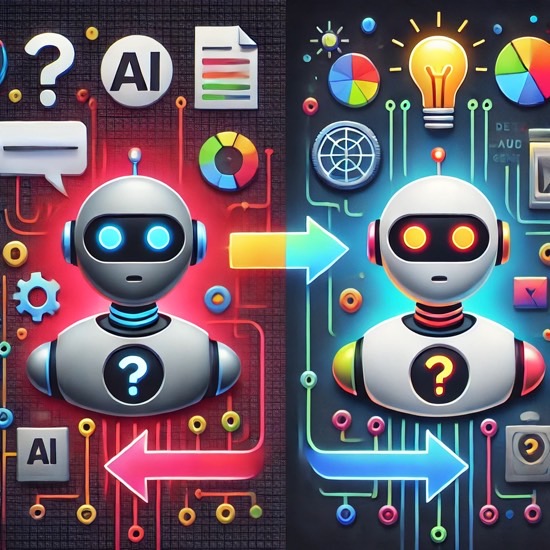What is Retrieval-Augmented Generation & Vector Databases?

TL;DR:
RAG combines AI with real-time data retrieval for smarter outputs, while vector databases help organize and search this info efficiently. Use RAG when you need accurate, updated data; skip it for simple tasks.
Introduction:
Imagine if your AI assistant could read the internet before answering your question—kind of like a super-smart friend who checks the latest news before giving advice. That’s Retrieval-Augmented Generation (RAG) in a nutshell. And behind the scenes? Vector databases make sure the AI grabs the right information quickly.
But what does all this mean for you? Whether you’re a developer, a content creator, or just AI-curious, these tools can transform how you work and solve problems. Let’s break it down in simple terms, with real-life examples, so you can see how this tech fits into your daily grind.
What is Retrieval-Augmented Generation (RAG)?
Retrieval-Augmented Generation is like giving your AI a search engine. Instead of relying solely on pre-trained knowledge (which might be outdated), RAG allows the AI to fetch up-to-date information from external sources—think documents, databases, or even the web—before crafting a response.
Why it matters: Traditional AI models generate answers based on data they’ve been trained on. But if you need current, context-specific, or highly specialized info, they might miss the mark. RAG bridges that gap.
Example:
Let’s say you’re planning a trip and want restaurant recommendations. A regular AI might suggest places based on old data. A RAG-powered AI? It’ll pull the latest reviews from your favorite foodie blogs or Google Maps before giving you a personalized list.
What is a Vector Database?
A vector database organizes information in a way that makes it easy for AI to find what you need—fast. Instead of traditional rows and columns, data is stored as vectors (fancy math representations). This allows the AI to search for similar information, not just exact matches.
Think of it like this: You’re looking for a photo of your dog wearing sunglasses. A regular database would need you to tag that photo perfectly. A vector database? It’ll recognize the concept of “dog with sunglasses” based on visual similarities—even if you never labeled it.
How Can You Use RAG and Vector Databases in Daily Life?
Now the fun part—real-life examples of how RAG and vector databases can streamline your everyday tasks.
1. Content Creation:
Need fresh, accurate content for your blog or social media? A RAG model can pull current events, stats, or quotes to help you write compelling, fact-checked articles.
2. Customer Support Automation:
If you run a business, RAG can help AI-powered chatbots provide up-to-date answers by pulling from your latest support docs or FAQs. No more outdated responses!
3. Personalized Recommendations:
Whether it’s finding the best Netflix shows based on your mood or suggesting workout routines, vector databases help AI personalize suggestions based on your preferences.
4. Research and Data Analysis:
Instead of manually sifting through piles of documents, RAG can fetch relevant studies or data, summarizing them for you in seconds.
When to “RAG” and When Not to “RAG”
RAG isn’t always the answer. Here’s when to use it—and when to skip it.
Use RAG when:
• You need up-to-date or specific information.
• The task requires pulling from large, dynamic datasets (like news articles, research papers, or company databases).
• You’re dealing with complex queries that a simple AI model can’t handle alone.
Skip RAG when:
• The task is simple and doesn’t require outside information (e.g., basic math, grammar checks).
• You’re working offline or have limited computational resources—RAG can be resource-heavy!
• Speed is crucial. RAG models take longer because they search for external data first.
Key Takeaways to Make It Click
1. RAG = AI with Google-like powers. It retrieves live info before generating answers.
2. Vector Databases = Smart filing systems. They help AI find and compare info based on similarity, not just exact matches.
3. Use RAG for tasks that need fresh, specific data. Skip it when speed or simplicity matters.
FAQ:
1. Do I need to be a developer to use RAG?
Not at all! Many tools and platforms integrate RAG behind the scenes. But if you’re a dev, you can build custom solutions using frameworks like LangChain.
2. What’s the difference between RAG and regular AI models like GPT?
RAG retrieves real-time data before answering, while GPT relies solely on pre-existing knowledge.\
3. Are vector databases secure for sensitive info?
Yes, many vector databases come with robust encryption and access control features to protect your data.
Conclusion:
Retrieval-Augmented Generation and vector databases might sound like tech buzzwords, but they’re tools that can make your AI interactions smarter and more relevant. Whether you’re automating work tasks or leveling up your creative projects, understanding when and how to use these tools can save you time and headaches.
Ready to “RAG” your workflow? Tell me how you’d use RAG in your daily life—or share your questions. Let’s build smarter, together!
Further Reading:
• Understanding LangChain and RAG Models
• Top Vector Databases to Know in 2025